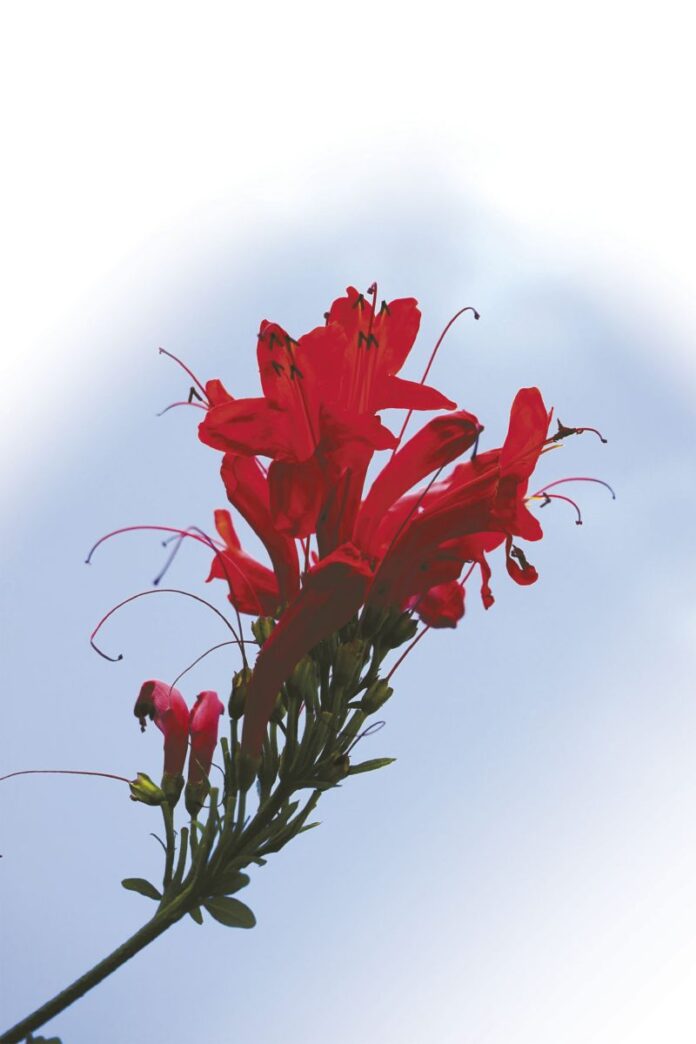BY Anita Westervelt Contender and Texas Master Naturalist
Orange so deep you could dive in — that’s how I view the vibrant clusters of blooms of Cape honeysuckle.
Apparently I’m not alone. Bees, butterflies and hummingbirds, seemingly drunk with nectar, keep this one of the busiest bushes in the garden.
Cape honeysuckle is an exotic species native to the region in South Africa by the Cape of Good Hope, which gives it part of its name. It is not actually a honeysuckle. True honeysuckle is in the Caprifoliaceae (or honeysuckle) family, deriving its name from the edible sweet nectar that is obtained from its tubular flowers.
Although sweet nectar and tubular-shape could describe it, Cape honeysuckle (Tecomaria capensis) belongs to the Bignoniaceae family. Others in that family are northern and southern catalpa, and the lovely jacaranda tree that produces blue trumpet-shaped flowers.
Cape honeysuckle offers a lot of versatility in the landscape whether for an urban or wildlife garden.
It is a fast growing perennial shrub that does best when planted in full sun in moderately fertile, well-drained soil. It can handle both acidic and alkaline soils.
In our area, where there generally is no frost, Cape honeysuckle will bloom in all seasons and the leaves will stay dark green and glossy year round.
An important thing to know about this plant is that it produces suckers, or runners. If you have the space, leave the plant to spread and take on its own shape. This requires the least maintenance and will provide an explosion of exquisite flowers in a large area. The runners can travel 30 or more feet and take root.
The shrub will offer shelter for wildlife and nectar for an amazing number of insects, inadvertently providing a smorgasbord for the large, yellow and black garden spider.
Alternately, the runners can be clipped and the plant maintained as a shrub that can be pruned and shaped and kept at a civil three feet or taller, depending on how much space it is allowed.
Because of its ability to self-propagate via runners, it can be used for erosion control or trained as a hedge or privacy screen. It can just as easily be used in a container on a patio, trained on a trellis or pruned into standard tree form.
The shape and design really depend on how much time and care you want to give it. If you have the patience and creativity, Cape honeysuckle is an excellent plant to use as an espalier. The self-clinging branches make it ideal for this ancient horticultural practice of training plants into flat, two-dimensional, formal patterns or artistic designs along a wall, fence or other support.
Cape honeysuckle is moderately salt tolerant and can handle coastal exposure, and sturdy enough to brave hefty gusts of wind.
It also is tolerant of high heat and drought and can be used in xeriscape landscaping. It has low water requirements once established, which may take several months depending when it is planted.
Cape honeysuckle will bloom more profusely and attract a larger variety of entertainment with a regular watering schedule.




